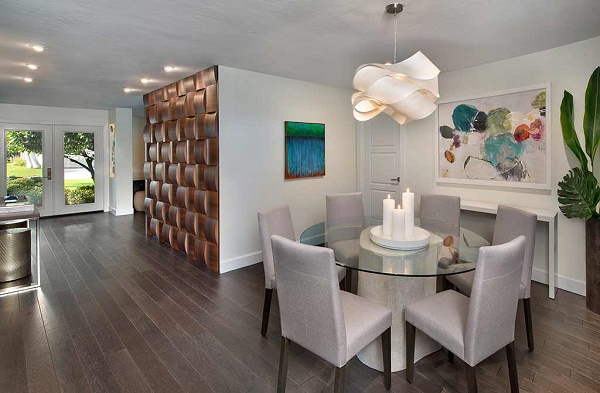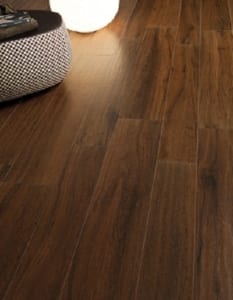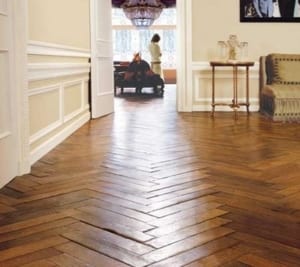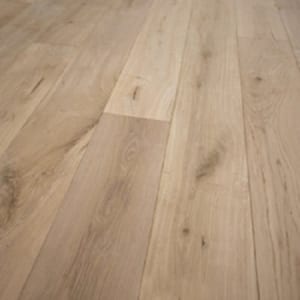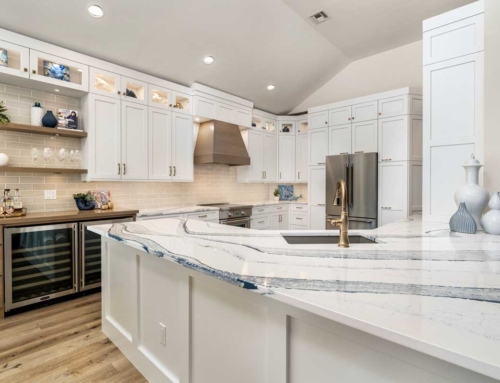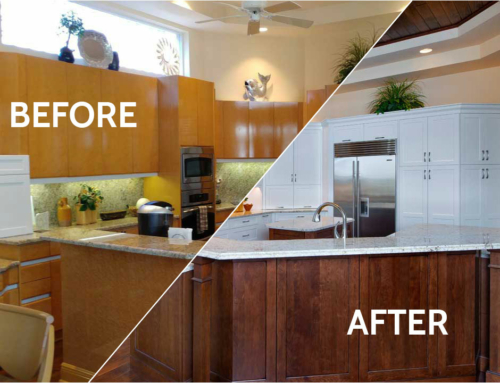Flooring is one of the most important considerations when taking on a home remodel. Fortunately, it’s an exciting time for homeowners when it comes to choosing materials. Every season brings new products to the interior design market, so the selections in flooring, fixtures, tile and other finishings are practically endless.
Several years ago, the market introduced wood-look tile. Since then, manufacturers have honed the technology and production process – with some astonishing results. Nowadays, it’s nearly impossible to tell the difference between wood-look tile and natural hardwood.
Opting for wood-look tile over real wood can be a great option for homeowners, depending on your style, location, and your budget. However, there are some key differences between hardwood and wood-look tile to consider before you go shopping. Here are some pros and cons to help you decide whether hardwood or wood-look tile is right for you.
Consider Your Budget & Personal Style
Wood-look tile has risen in popularity in large part because, well, it really does look like the real deal. Coming in at a considerably lower price point than hardwood – which can be prohibitively costly – wood-look tile is a great option for homeowners seeking a natural effect without breaking the bank.
Whether you style is contemporary or traditional, wood-look tile is so easily customizable that it can be tailor-made to fit your style. Manufacturers now develop a variety of widths to imitate hardwood planks, and tiles are available up to 42 inches in length.
However, there is one potential giveaway when trying to achieve a hardwood effect with wood-look tile. No matter what type of tiling you choose, it will still require grouting. To minimize grouting, consider using wood-look tile that has rectified edges. Rectified edges are finished mechanically, so they are both precise and consistent. The refined edges allow tiles to be installed closer together with a minimal grout, creating an even better hardwood effect.
However, if you’re a purist, nothing can replace the organic feel of hardwood flooring. No matter how realistic wood-look tiling may get, nothing can beat the perfectly seamless design of hardwood like real hardwood.
Evaluate Your Location
Don’t forget to consider where you live when thinking about flooring. Hardwood naturally stays warm, which can be wonderful for homes in cold climates. If you have the budget for it, hardwood is also great for radiant heated floors (though not all radiant heating systems work with hardwood). But for residents of sunny Southwest Florida, the feel of tile underfoot can be refreshingly cool. Tile tends to stay cool to the touch, which helps to keep the house – and its residents – cooler, regardless of the weather.
Assess Your Lifestyle
One sure-fire way to tell hardwood from wood-look tile is to simply walk on it. Tile is devoid of any natural sound absorbing features and is notoriously loud to walk on. And if you plan to stand for long periods of time, tile can be tough on your feet. Alternatively, hardwood will absorb more sound and is easy underfoot, making it perfect for cocktail parties, family get-togethers, and that holiday bake-a-thon.
Remember Your Pets
Don’t forget to factor in your furry friends into your choice of flooring. Hardwood flooring is susceptible to scratching. If you’re considering hardwood, be sure to protect floors with a high-quality urethane coating and keep your pet’s claws trimmed to reduce damage. While tile stands up better to dog and cat claws than hardwood, it can be hard and uncomfortable for pets to lie on. If you are considering tile, be sure to provide pets with a comfortable place to rest and sleep.
Get Practical
In today’s hectic world, upkeep doesn’t get much easier than it does with wood-look tile. Tile is notoriously easy to maintain. It’s also water resistant, making it perfect for adding a natural element to bathrooms, mudrooms, or entryways without worrying about water damage. Better still, if a tile cracks, it can simply be replaced – without the need to refinish the whole floor.
For all its beauty, hardwood flooring is higher maintenance than wood-look tile, requiring regular cleaning with approved products. Eventually, hardwood floors will also need to be re-finished in order to protect their natural beauty, which can be a significant hit to your pocketbook. Being susceptible to dings, nicks, and cracks, hardwood is not water resistant, meaning that it should not be used in bathrooms, laundry rooms, or any area of the home with a chance of a wet floor.
Ultimately, however, you can’t go wrong with either hardwood or wood-like tile. Mostly, it’s a matter of preference, budget, and lifestyle. And who says you have to choose? A combination of hardwood floors in the kitchen and wood-like tile in the bathrooms may just be the perfect solution for your next home remodel. Be creative, and think outside the box!
For more design inspiration, check out Progressive Builders’ portfolio. At Progressive Builders, we’re full of exquisite design ideas for every room in the house.

